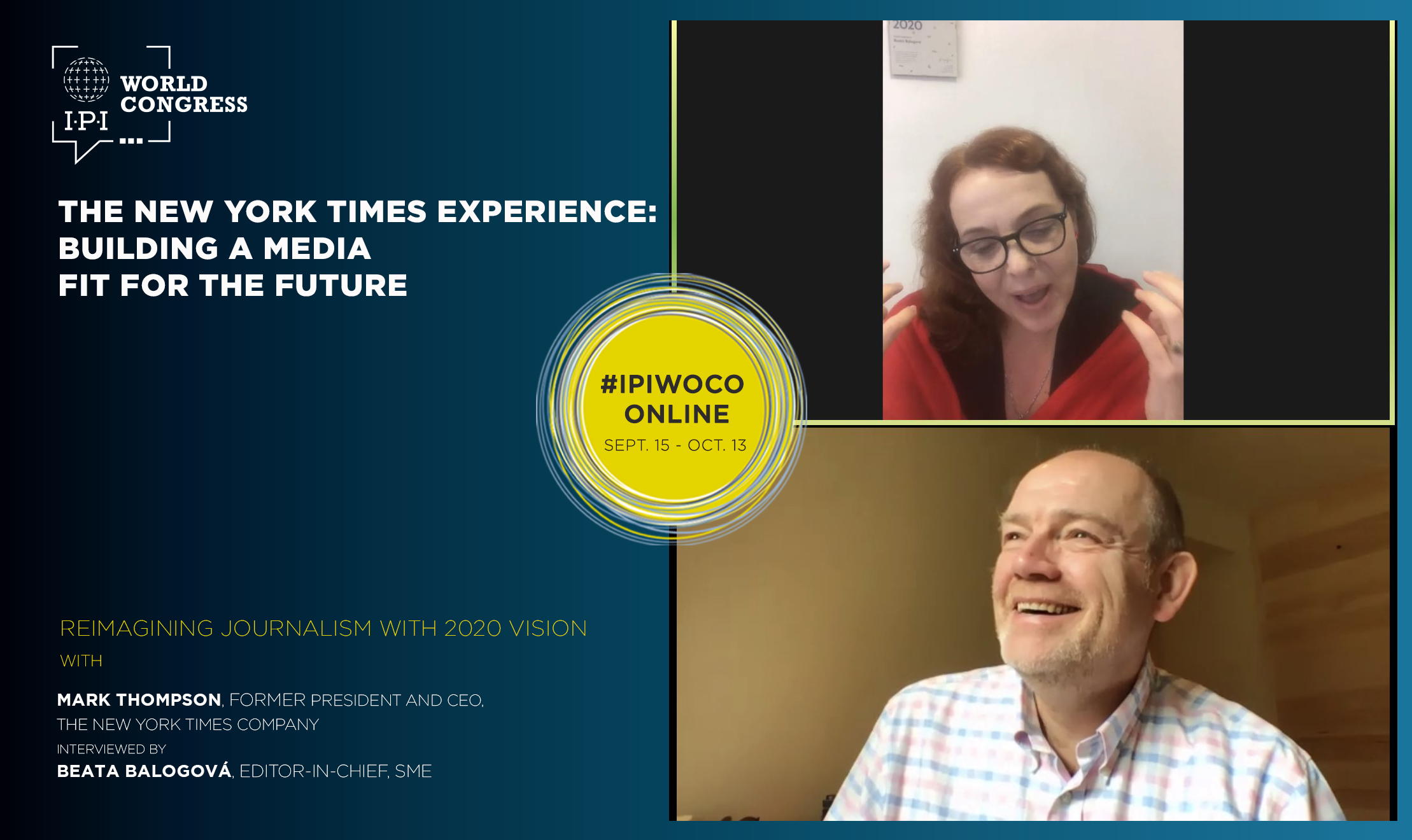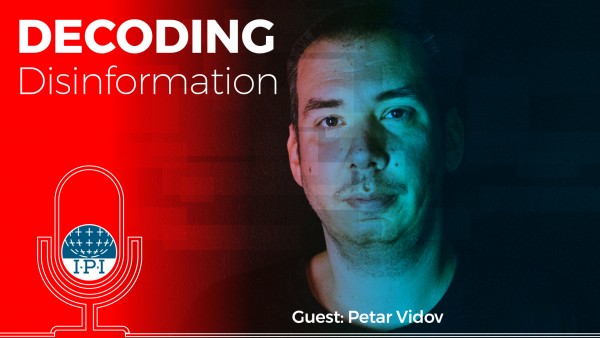On Tuesday, the International Press Institute (IPI) kicked off its virtual World Congress 2020 with three expert talks featuring leading journalists, editors and media executives from around the world discussing challenges facing the media industry and journalism in the digital age.
Day one of IPIWoCo saw three online webinars focus on different aspects of how the transition from print to online media had radically transformed news, drove innovation and forced journalists to adapt to a host of fresh challenges for the industry and its journalists.
The New York Times Experience: Building a Media Fit for the Future
The topic of digital subscriptions was continued in the third event, which saw Beata Balogová, Editor-in-Chief of SME, a major independent daily and news site in Slovakia, interview Mark Thompson, the former President and CEO of the The New York Times Company.
In a wide-ranging discussion which jumped from the role of Facebook and Google in modern publishing to the future of podcasting, the pair discussed how the New York Times (NYT) had been able to build a business model fit for the future through digital subscriptions, top journalism, and loyal audience engagement.
#IPIWoCo-Session 3@nytimes former CEO Mark Thompson talks about the news outlet business model: “You’ll never beat Google or Facebook in terms of distribution, so we focused on designing a rewarding experience of our content for users who’d come to our digital products” pic.twitter.com/zRWoiQ2KiL
— IPI – The Global Network for Press Freedom (@globalfreemedia) September 15, 2020
Thompson explained that digital subscriptions at the NYT have grown from 500,000 to more than five million and the company has set a goal to reach 10 million total subscriptions by 2025. However, he said he was hopeful this could grow even further. “The New York Times is one of the few news brands that can be a provider of high-quality journalism for people around the world in the English language,” he said. Discussing the newspaper’s growth, he stressed that in trying to develop in the digital age, many publications had focused too much on monetization and not enough on developing a connection with the paper’s audience.
“This was not about clickbait or moving down market”, he said. “It’s about ensuring the experience for the reader is engaging and exciting”. Central to this was taking readers seriously, he added. “They want a critical, lively experience with us. Each loyal reader will have a columnist they hate or a section of the website they dislike. But we want our readers to challenge us and vice-versa. It works both ways.” Underpinning all of this, he said, was the newsroom. “You have to beg, borrow and steal to make sure you have the best team of experienced journalists in the world.”




